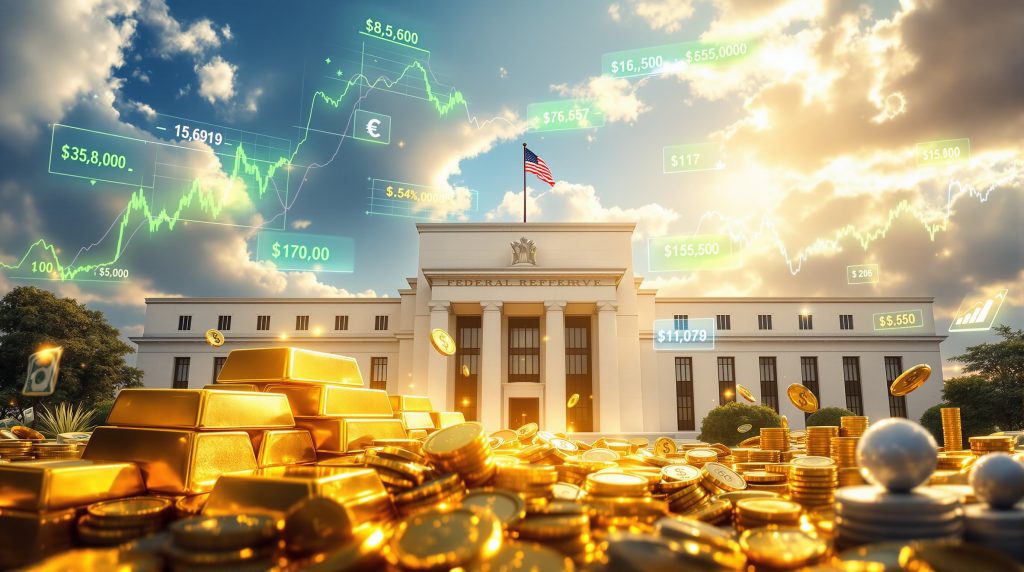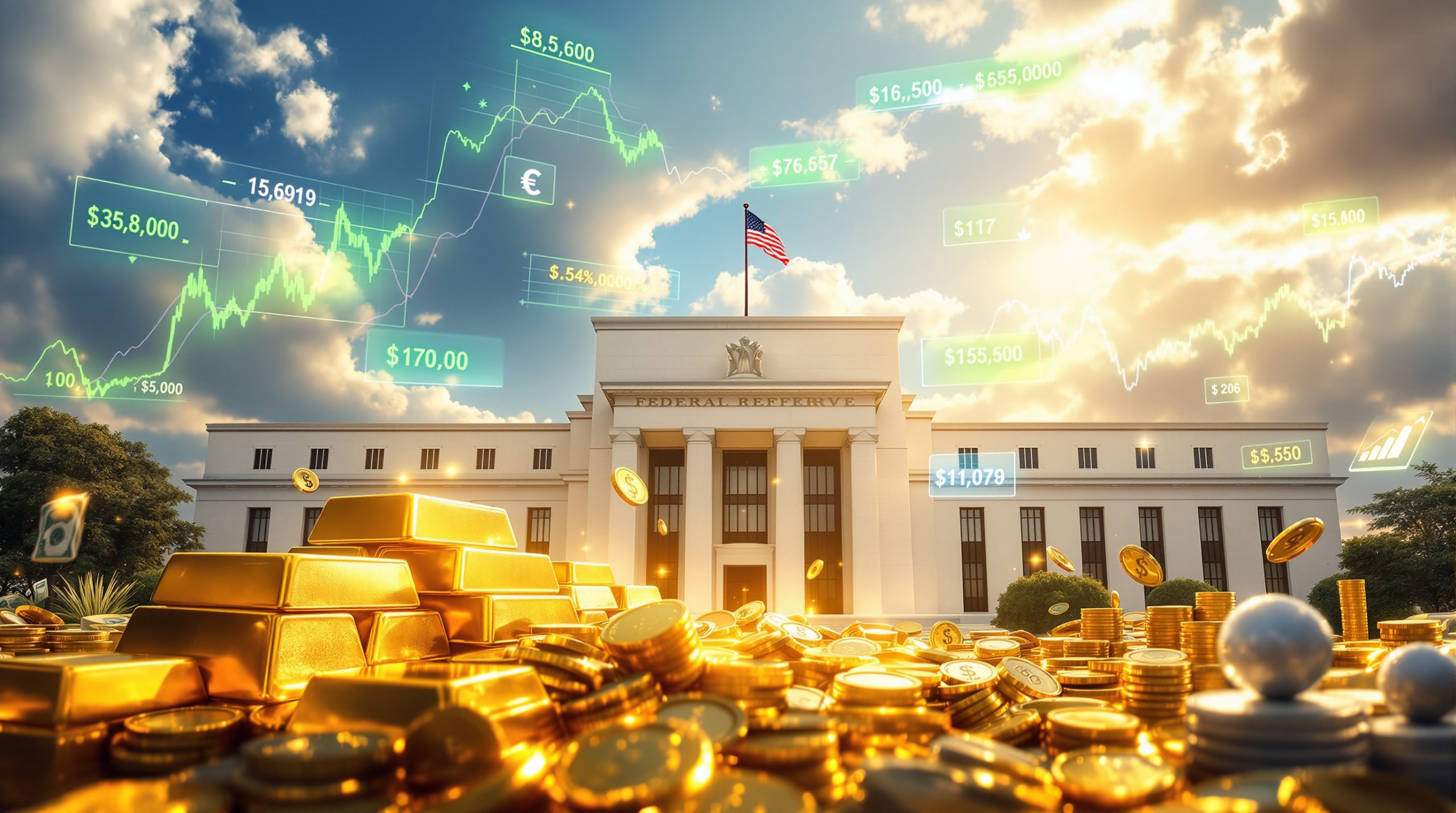Understanding the Fundamental Relationship Between Economic Instability and Metals Markets
Market volatility emerges from complex interactions between macroeconomic uncertainty and investor behavior patterns that have persisted across decades of financial cycles. When traditional economic indicators become unreliable or delayed, precious metals markets experience amplified price swings as participants navigate incomplete information landscapes. This volatility clustering phenomenon intensifies during periods when monetary policy direction remains unclear and employment data fails to provide definitive economic health signals.
The relationship between economic uncertainty and precious metals volatility operates through multiple transmission channels that affect both institutional and retail investment decisions. Historical analysis reveals recurring patterns where policy vacuum periods generate sustained price fluctuations across gold, silver, platinum, and palladium markets, with each metal responding differently based on its unique demand characteristics and market structure.
Federal Reserve Policy Uncertainty and Interest Rate Expectations
Central bank monetary policy decisions create immediate market reactions that propagate through precious metals pricing mechanisms with measurable intensity. The Federal Reserve's capacity to adjust interest rates outside scheduled Federal Open Market Committee meetings represents a lesser-known flexibility that hasn't been utilised frequently since the 1980s, yet this capability adds another layer of uncertainty to market expectations.
Furthermore, understanding the US inflation dynamics becomes crucial when assessing Federal Reserve policy responses. Research indicates that interest rate transmission mechanisms significantly influence precious metals pricing during uncertain periods.
Key monetary policy transmission effects include:
• Rate cut expectations triggering immediate portfolio reallocation toward non-yielding assets
• Policy meeting delays creating information vacuums that amplify speculative positioning
• Emergency rate adjustments generating sudden institutional rebalancing activities
• Hawkish policy signals increasing opportunity cost calculations for precious metals holdings
The Federal Reserve's historical tendency to limit rate changes to scheduled meetings has created market expectations that may not reflect the institution's actual operational flexibility. This disconnect between perceived and actual policy timing capabilities contributes to volatility spikes when markets operate under incomplete understanding of monetary policy mechanisms.
Employment Data Interpretation and Market Reactions
Labour market statistics during uncertain economic periods generate immediate precious metals market responses as investors interpret employment figures for monetary policy implications. Recent employment data showing 118,000 job additions demonstrates how figures that appear suboptimal from long-term growth perspectives can exceed market expectations during periods of heightened uncertainty.
Employment data interpretation becomes particularly complex when government shutdowns delay releases, forcing Federal Reserve officials to make policy decisions with incomplete labour market information. This data scarcity creates feedback loops where market participants must extrapolate policy directions from limited statistical evidence.
Employment-driven volatility patterns:
• Sub-150,000 monthly job additions historically correlating with increased precious metals demand
• Unemployment rate stability creating policy uncertainty and market indecision
• Employment data delays during government disruptions amplifying speculative positioning
• Corporate hiring reluctance during recovery periods extending unemployment elevation cycles
Inflation Dynamics and Currency Purchasing Power Effects
Current inflation measurements around 3% on both headline and core basis create complex decision matrices for Federal Reserve policy makers who must balance employment maximisation against price stability objectives. This dual mandate creates inherent tension during periods when economic indicators provide conflicting signals about appropriate policy responses.
In addition, the role of gold as inflation hedge becomes increasingly relevant during these uncertain times. Inflationary pocket development in specific economic sectors adds granular complexity to policy decisions, as Federal Reserve officials must distinguish between transitory price pressures and sustained inflation trends. These analytical challenges translate directly into precious metals volatility as markets attempt to anticipate policy responses to nuanced inflation patterns.
Silver's Amplified Volatility Characteristics
Silver markets demonstrate consistently higher volatility than gold during uncertain economic periods due to the metal's dual-nature positioning as both precious metal and industrial commodity. Recent price movements showing silver falling below $50 and recovering to $48 levels within single trading sessions illustrate this amplified volatility characteristic.
The smaller market capitalisation of silver compared to gold enables equivalent capital flows to generate larger percentage price movements, creating feedback loops that can accelerate both upward and downward price trends during uncertain periods. For instance, the emerging silver market squeeze demonstrates how supply constraints can amplify these volatility characteristics.
Silver volatility amplification factors:
• Industrial demand sensitivity to economic growth expectations creating additional demand variability
• Smaller market size enabling larger price impacts from equivalent investment flows
• Dual-use nature generating competing demand pressures during economic transition periods
• Higher beta characteristics relative to gold during market stress events
GDP Growth Trajectories and Recession Probability Calculations
Real GDP quarterly data reveals economic growth patterns hovering between zero and 2.5-3% following the post-COVID recovery period, similar to patterns observed from 2010-2019 following the Great Recession. This low-growth environment creates sustained uncertainty about economic trajectory direction and appropriate policy responses.
The lack of robust economic growth creates conditions where minor data variations can significantly alter recession probability assessments, generating volatile precious metals market reactions as investors adjust portfolio allocations based on evolving economic scenarios.
GDP growth rates approaching zero with occasional negative quarterly readings create heightened sensitivity to individual economic data releases and policy announcements.
Platinum and Palladium Market Dynamics During Uncertainty
Platinum markets exhibit different volatility patterns compared to gold and silver, with recent price movements dropping below $1,500 before recovering demonstrating the metal's sensitivity to both economic uncertainty and industrial demand fluctuations. Professional market analysis suggests platinum prices may be trading above reasonable valuation ranges during current market conditions.
Palladium's sharp price movements toward $1,300 levels before recovering reflect similar dual-nature dynamics where precious metals demand competes with automotive sector industrial requirements during uncertain economic periods.
Platinum group metals considerations:
• Industrial demand exposure creating additional volatility layers beyond precious metals factors
• Automotive sector dependency affecting demand patterns during economic uncertainty
• Supply concentration risks in specific geographic regions amplifying price movements
• Different investor base characteristics compared to gold and silver markets
Market Psychology and Investor Behavior Patterns
Investor psychology during uncertain economic periods demonstrates recurring patterns where anxiety levels drive demand for tangible assets despite increased volatility risks. This behavioural tendency creates sustained support for precious metals prices even during periods of extreme price fluctuation.
However, the gold highs analysis reveals that historical analysis shows investor behaviour patterns where decades-long forecasting errors by certain market commentators continue attracting significant followings, demonstrating the persistence of psychological factors in precious metals market participation decisions.
Behavioural finance considerations:
• Anxiety-driven purchasing maintaining demand floors during volatile periods
• Track record evaluation becoming secondary to narrative appeal for certain investor segments
• Confirmation bias affecting interpretation of economic data and policy signals
• Herd behaviour amplifying both buying and selling pressure during trend periods
Risk Management Strategies for Volatile Market Environments
Professional investors employ sophisticated risk management techniques during periods of heightened economic uncertainty and precious metals volatility, including dynamic position sizing and volatility targeting methodologies. Ultra-short-term trading strategies require particular caution during current market conditions where intraday price movements exceed normal ranges.
Position management during volatile periods requires understanding historical volatility clustering patterns and implementing appropriate entry and exit strategies that account for increased price uncertainty. Furthermore, precious metals market dynamics demonstrate why traders increasingly turn to these assets amid economic uncertainty.
Professional risk management approaches:
• Volatility targeting strategies adjusting position sizes based on realised volatility measurements
• Options-based hedging techniques protecting against extreme price movements
• Time horizon alignment matching investment duration with uncertainty period estimates
• Diversification across multiple precious metals reducing concentration risks
Technology and Market Structure Evolution
Electronic trading platforms and algorithmic investment strategies continue evolving how economic uncertainty translates into precious metals volatility, potentially altering established market reaction patterns. These technological developments may create new volatility transmission mechanisms requiring updated analytical frameworks.
Market structure changes affecting precious metals trading include increased algorithmic participation, expanded electronic market access, and evolving clearing and settlement mechanisms that can amplify or dampen volatility during uncertain periods.
Future Economic Uncertainty Sources and Market Implications
Emerging economic risks including fiscal policy sustainability questions, international trade relationship evolution, and monetary system structural changes will continue driving precious metals volatility through established transmission mechanisms while potentially creating new market dynamics.
The Federal Reserve's historical constraint from fiscal policy financing requirements since 1981 represents a structural factor that may influence future monetary policy flexibility and precious metals market reactions during uncertain economic periods. Consequently, the gold-bond trends analysis provides crucial insights into how these relationships might evolve.
Prospective uncertainty factors:
• Fiscal policy sustainability concerns affecting currency stability expectations
• International monetary system evolution creating new safe-haven demand patterns
• Technological disruption of traditional financial market structures
• Climate-related economic transition costs generating policy uncertainty
Understanding these complex interactions between economic uncertainty and precious metals volatility enables investors to develop more sophisticated approaches to portfolio management during challenging market environments. The relationship between macroeconomic instability and metals market behaviour continues evolving, requiring ongoing analysis of both fundamental factors and market structure developments.
Disclaimer: This analysis is for educational purposes and should not be considered investment advice. Precious metals markets involve significant risks, and past performance does not guarantee future results. Investors should conduct their own research and consider consulting with qualified financial professionals before making investment decisions.
Ready to Capitalise on Market Volatility?
Discovery Alert's proprietary Discovery IQ model delivers real-time notifications on significant ASX mineral discoveries, helping you identify actionable opportunities while precious metals markets experience heightened volatility. Begin your 30-day free trial today to secure your market-leading advantage during these uncertain economic times.




